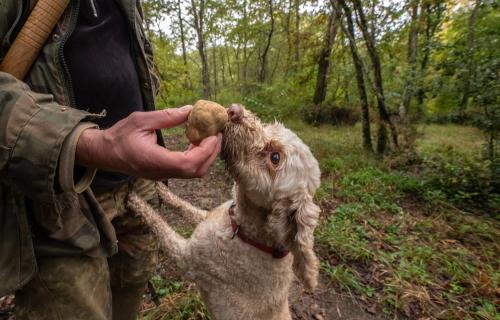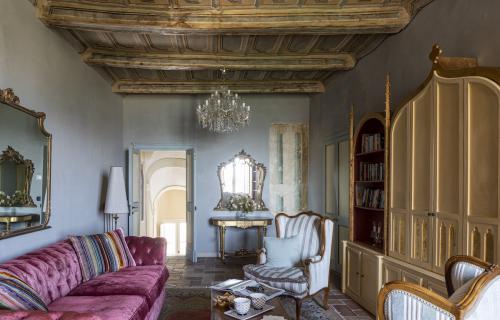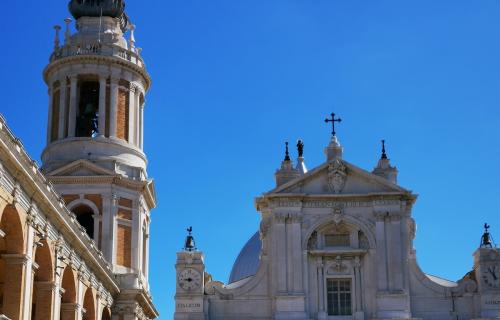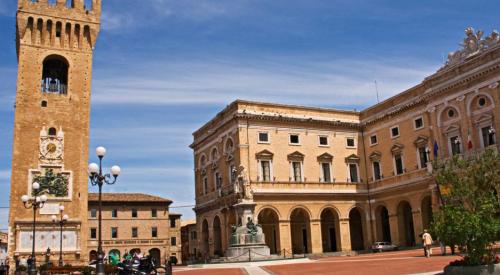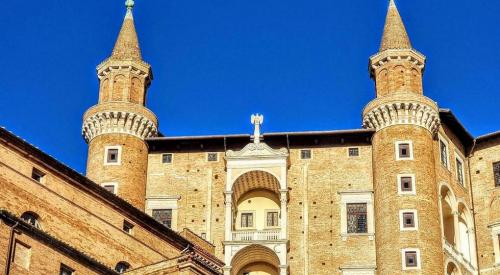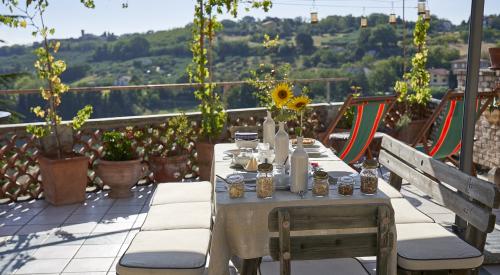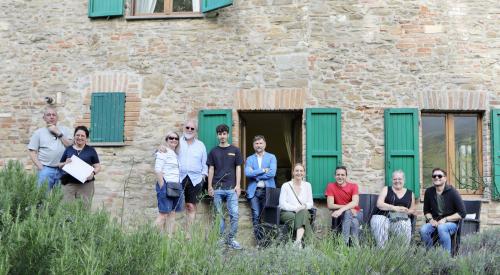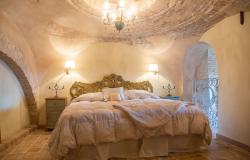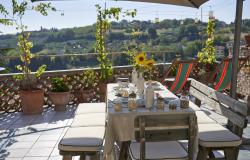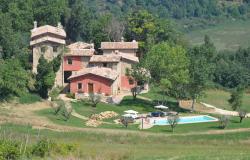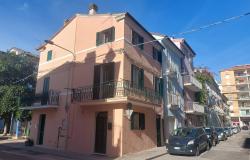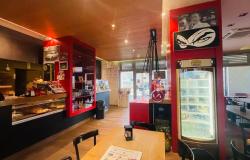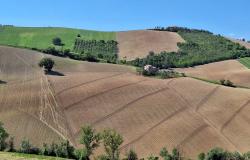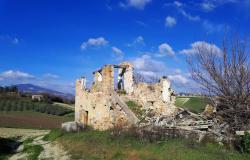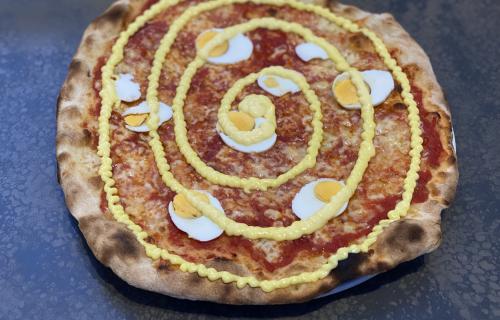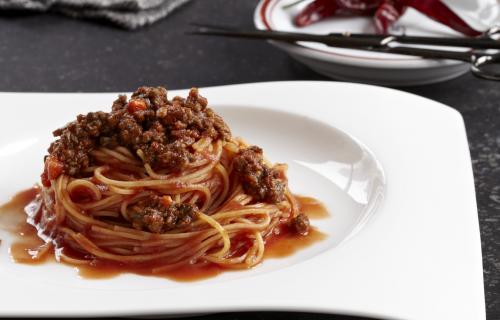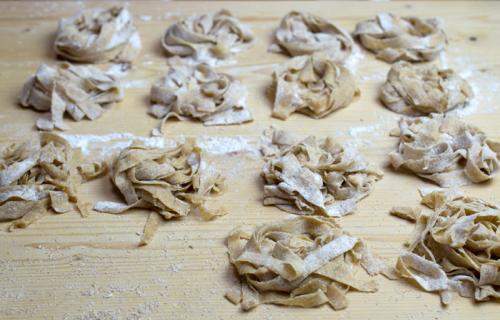Hello. I hope it is OK to post this enquiry here. I am trying to trace my family history to Cupra Marittima . My great grandfather was Lou/Luigi Luciani believed to have been born around 1866. His father's name might have been Eugene, and his mother Maria Paccasassi.
Pesaro (Marche)
Our Essential Guides aim to give you an introductory overview to a city, region or geographical area. For a deeper dive into Pesaro and surroundings in Marche, check out the Spring 2024 issue of Bellissimo, our quarterly e-magazine for Premium Members.
The Essential Guide to Pesaro
Pesaro in Marche has both a sporty and a musical spirit with its twin nicknames of the “Cycling City” for its many bike paths and the “City of Music” due to its associations with the opera composer Gioachino Rossini. Founded in 184 BCE as a Roman colony, the city, one of the largest Adriatic seaside resorts, has a natural port that made it an important stop on the trade route of the mighty Via Flaminia — the ancient road that linked the Adriatic and Tyrrhenian coasts to Rome.
Bookended between the slopes of the San Bartolo and Ardizio hills and the sea, Pesaro claims more than seven kilometers (4.3 miles) of uninterrupted sandy beaches fringed by a seafront promenade densely populated with restaurants, clubs, cafes and hotels. The city is also home to remarkable churches, elegant villas and sumptuous palaces erected from the Renaissance through the Art Nouveau era by noble families. A multifaceted city of historic charm with vibrant and world-class arts and culture — not to mention a new feather in its cap as the Italian Capital of Culture for 2024 — there is something to explore at every turn in Pesaro.
When to go
Opt for the off season. In spring, crowds are light and the weather is at its loveliest. Likewise, from early fall through December, the weather remains sunny, and even in the coldest months of January and February (lows 0C/32F and highs 10C/50F) a coat/slicker, hat, scarf and gloves will keep you comfortable when you’re out and about.
Not averse to hordes of people and warmer temperatures? During Pesaro’s high summer season, beaches are blanketed with sun worshippers and the historic center swells with holidaymakers. Thanks to the marine influence, however, breezy coastal temperatures usually hover around an average, manageable high of 28C/82F. If you decide to visit in July through September, ferries run regularly, making it easy to plan a quick side trip to Croatia.
How to get to Pesaro
Strategically situated in the northernmost corner of Marche, near the border with Emilia-Romagna, Pesaro can be reached by land, sea or air.
By train
Pesaro’s train station is located in the city center not far from the port and many of the city’s main attractions. There are frequent and direct connections to Pesaro from major Italian cities such as Bologna, Milan and Ancona. From Rome and further south, you can catch a train to Ancona and change to another train for Pesaro.
By bus
Pesaro offers intercity and extra-urbano (outside the city) bus connections to and from destinations like Milan, Rome, Naples and Ancona. Affordable and convenient, coaches arrive and depart from either the Pesaro Stazione FS (main railway station) or at Piazza Stefanini in the Palasport area.
By car
Pesaro is located along the A14 motorway that stretches between Bologna and Taranto. Those arriving by car from the north will need to take the “Pesaro/Urbino” exit; those from the south, the Fano exit. In both cases, you should be following the signs for “Pesaro centro.”
By air
The nearest airports to Pesaro are Federico Fellini Airport (RMI) in Rimini. The next closest is Raffaello Sanzio International Airport (AOI) in Ancona, about 45 minutes away. From either Rimini and Ancona airports it’s easy to get into town via train, bus, rental car or taxi. Guglielmo Marconi Airport (BLQ) in Bologna is also about a 90-minute car ride away.
By sea
Situated south of the city center, the Port of Pesaro has two parallel docks for mooring both commercial ferries and recreational vessels. The busy harbor is bordered on one side by the seaside promenade and enjoys proximity to the popular and public Spiaggia Duna di Baia Flaminia (dune beach in Baia Flaminia), considered the most beautiful in Pesaro. During the summer, six ferries run regularly: north to Cesenatico between Ravenna and Rimini on the Adriatic, as well as to the Croatian towns of Lošinj, Pula (or Pola) and Zadar along the Dalmatian coast.
Getting around Pesaro
Pesaro is small enough to be explored on foot or from a bicycle seat (hence its nickname).
Like most cities in Italy, Pesaro has a historic center characterized by one-way streets and limited traffic zones (ZTL). To avoid getting a multa (traffic ticket), know that in the heart of the city are convenient paid parking structures where you can safely and securely leave your vehicle. The multi-story Curvone car park is located on Viale dei Partigiani, and another can be found on via Marsala. There are also several free car parks in San Decenzio (400 spaces), Via dell'Acquedotto, and Villa Marina car park in the Ponente area of Viale Trieste.
A municipal bus service is operated by Adriabus and connects the city’s centro storico with neighborhoods and seaside establishments, and services surrounding towns as well. In the summer, there’s a free shuttle service that takes people from the parking lots to the lidos (bathing beaches). You can also take advantage of the “free-flow” cycle-sharing service to pedal around the center or out to the shore.
Best things to do and see in Pesaro
Meander around Piazza del Popolo
Pesaro’s Piazza del Popolo, once the site of an ancient Roman forum, was constructed in the 17th century. The square’s 20th-century Palazzo Comunale (town hall) replaced a 16th-century iteration after the latter was severely damaged during an earthquake in 1930 that left it dilapidated.
Named La Pupilla di Pesaro (the pupil of Pesaro), the fountain in Piazza del Popolo was designed and built in 1588 by Lorenzo Ottoni, a student of Bernini. The whimsical Baroque structure is an allegory to the sea with a delightful assortment of seahorses, shells, shipwrecks, water nymphs, and Tritons astraddle dolphins. The spouting sculpture was destroyed in 1944 during World War II, but was rebuilt in 1960, and again restored in 1988 to bring the white Istrian stone and red-orange Veronese marble back to life.
Go museum-hopping
The Musei Civici inside Palazzo Mosca is a must. Set in the former residence of the wealthy Mosca family, the museum, which underwent renovation in 2013, holds masterworks such as Giovanni Bellini’s polyptych, Coronation of the Virgin, Guido Reni’s Fall of the Giants, and Simone Cantarini’s Penitent Mary Magdalene. Check out the interesting assemblage of decorative arts and ceramics from different eras.
Insider tip: Look for the delightful “Wall of Books” located on an exterior wall of Palazzo Mosca. Conceived and created for a production of the opera Moise et Pharaon at the Rossini Opera Festival in 1997, the snapshot-worthy backdrop has been there ever since.
The Museo Officine Benelli, meanwhile, showcases an entirely different industry and story, with its focus on the six legendary Benelli brothers, founders of the oldest motorcycle manufacturers in Italy (the museum is located inside their former headquarters). Over 200 vintage and rare Benelli and MotoBi and Marche motorcycles are on permanent display — from the 1920s to the present day. The museum also houses a vintage motorcycle restoration school.
To see a fascinating array of archeological finds, paintings, sculptures, and textiles that were once part of the liturgical collections in Pesaro’s Cathedral of Santa Maria Assunta, check out the Museo Diocesano. After your tour, stop next door for a coffee and to admire the beautiful interior and interesting vintage objects at Café Casa Vaccaj inside the historic Casetta Vaccaj.
You can’t get a full picture of Pesaro without a visit to the Casa Rossini — dedicated to composer Gioachino Rossini, born here in 1792 and famous for such classics as the Barber of Seville, William Tell and Tancredi. Rossini’s converted residence features memorabilia, multimedia audio and visual rooms, documents, autographed letters, and musical scores penned by the genius artist. Although Rossini left Pesaro at a young age, his ties with the city were strong; upon his death, he bequeathed his fortune to the municipality.
Soak up the sun and sea
Celebrated for its natural beauty, Pesaro is worth braving the crowds; its vast coastline has been given the Blue Flag award for its sandy beaches, clean water, and quality of hospitality. Pesaro’s shoreline is divided into three spiaggia (beach) areas — Baia Flaminia, Ponente, and Levante.
Baia Flaminia
Pesaro’s spiaggia libera (free beach), Duna di Baia Flaminia is a rare urban-naturalist paradise located between the Foglia river and Parco Naturale Monte San Bartolo. The dune acts as a coastal barrier to protect against erosion, and wooden walkways are laid out to make access to the beach easier and keep visitors from trampling across vegetated areas. A lido named Luciano Pavarotti (yes, after the world-famous Italian opera singer) has a designated section for dogs called Abbaia Flaminia.
Ponente
This fine-sand beach is one of Pesaro’s widest (Levante is longest). Here, the seabed gently slopes out to sea with outcroppings of breakwater cliffs, and the beach is bordered to the north by the Port of Pesaro.
Levante
Stretching two kilometers long (1.3 miles), this beach is completely equipped with private bathing establishments (stabilmenti), but also offers free areas to the public. Rent a canoe or kayak to paddle the afternoon away or go scuba diving to discover the Adriatic’s amazing seabed.
Vallugola
Another pick close to San Bartolo park is the gorgeously wild Vallugola beach. Characterized by secluded bays of clear waters and shallow sea beds flanked by green hills, this beach is more pebbly than sandy, and only accessible by a steep footpath but so worth the hike if you’re seeking isolation and calm.
A taste of Pesaro
Pesaro has a unique variety of culinary offerings, consisting of ultra-fresh seafood, robust pasta staples and those foraged favorites, black and white truffles.
What to eat
Take your basic pizza margherita (tomato sauce and mozzarella), top it with slices of hard-boiled eggs and mayonnaise and you’ve got a Pizza Rossini. As far as we know, it only exists in Pesaro…for now.
Not to be confused with its smaller cousin, tortellini, cappelletti alla pesarese is named for a type of winged headdress worn by country folk around these parts. An egg pasta stuffed with ricotta and minced meat — a combo of veal, pork, and capon — it’s seasoned with pepper, nutmeg and parmesan, then served swimming in broth. It headlines at Christmastime.
Vincisgrassi is a regional variant of baked lasagna made with flat pasta dough spooned in six or seven layers with a special ragu of coarsely cut meat (often beef, pork and chicken giblets), bechamel, cloves, and nutmeg cooked in Marsala wine.
Said to be one of Michelangelo’s favorites, Casciotta di Urbin is a semi-hard sheep’s cheese made in the Pesaro-Urbino province.
Bostrengo (or burlengo in local dialect) is a dessert made of boiled rice with sugar, stale bread, nuts, apples, pears, honey and dried figs; just about anything lying around the pantry will do.
What to drink
Cultivated in the Colli Pesaresi region in the northern reaches of Marche, white wines are produced on the coast and reds in the hinterlands.
Bianchello del Metauro DOC is a refreshing white wine cultivated in the area near the Metauro river. It’s said to have played an important role in the Romans taking the Carthaginian capital during the third Punic war because the opposition’s army was so drunk on the wine that they were unable to properly defend the city.
Marche Highlights
What you can't miss in Marche
Where is Pesaro

Top Experiences in Marche
Best places to stay in Marche
Properties for sale in Marche
Recipes From Marche
What others are saying about Marche
We are retiring in two years from US and I read an article to reach out about best to leave money in US bank account. I may have consulting income after I receive social security in two years. Do I have to pay taxes in Italy on income too? Or on social security?
We are buying a house close to Sarnano, we will be there this fall. Are there any furniture stores in that area? Thanks



